Match the pictures with the words.


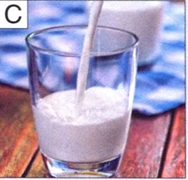
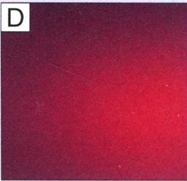

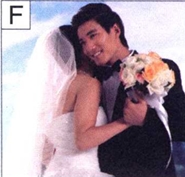
shǒubiǎo ① 手表 ________
bàozhǐ ② 报纸 ________
niúnǎi ③ 牛奶 ________
fángjiān ④ 房间 ________
zhàngfu ⑤ 丈夫 ________
hóngsè ⑥ 红色 ________
Look at the sketch map and describe the positions of the places in it.

课文 Text 1 在房间 In the room 03-1
Zhè kuài shǒubiǎo shì nǐ de ma?
A: 这 块 手表 是你的吗?
Bú shì wǒ de. Shì wǒ bàba de.
B: 不是我的。是我爸爸的。
Duōshao qián mǎi de?
A: 多少 钱 买的?
Sānqiān duō kuài.
B: 三千 多块。

A: Is this watch yours?
B: No, it isn’t. It’s my father’s.
A: How much is it?
B: More than 3,000 yuan.
1. 手表 shǒubiǎo n. watch
2. 千 qiān num. thousand
2 在家里 At home 03-2
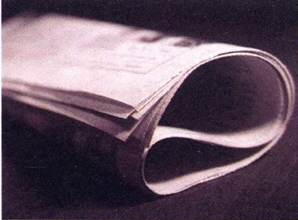
Zhè shì jīntiān zǎoshang de bàozhǐ ma?
A: 这 是今天 早上 的报纸吗?
Bú shì, shì zuótiān de.
B: 不是,是昨天的。
Nǐ tīng, shì bu shì sòng bàozhǐ de lái le?
A: 你听,是不是 送 报纸的来了?
Wǒ kàn yíxià. Bú shì, shì sòng niúnǎi de.
B: 我 看一下。不是,是送 牛奶的。
A: Is it this morning’s newspaper?
B: No, it isn’t. It’s yesterday’s.
A: Listen. Is that the man who delivers newspaper?
B: Let me see. No, it’s the milkman.
3. 报纸 bàozhǐ n. newspaper
4. 送 sòng v. to send, to deliver
5. 一下 yíxià num.-m. used after a verb, indicating an act or an attempt
6. 牛奶 niúnǎi n. milk
3 在家里 At home
Zhè shì shuí de fángjiān?
A: 这 是 谁 的 房 间?
Zhè shì wǒ hé wǒ zhàngfu de, pángbiān nàge
B: 这 是 我 和 我 丈 夫 的,旁 边 那 个
xiǎo de fángjiān shì wǒ nǚ’ér de.
小 的 房 间 是 我 女 儿 的。
Nǐ nǚ’ér de fángjiān zhēn piàoliang! Dōu shì fěnsè de.
A: 你 女 儿 的 房 间 真 漂 亮!都 是 粉 色 的。
Shì a, fěnsè shì wǒ nǚ’ér zuì xǐhuan de yánsè.
B: 是 啊,粉 色 是 我 女 儿 最 喜 欢 的 颜 色。
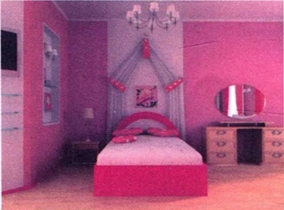
English Version
A: Whose room is this?
B: It’s my husband’s and mine. The small one beside it is my daughter’s.
A: Your daughter’s room is so pretty! It’s all pink.
B: Yes. Pink is her favorite color.
New Words
7. 房 间 fángjiān n. room
8. 丈 夫 zhàngfu n. husband
9. 旁 边 pángbiān n. beside
10. 真 zhēn adv. really, indeed
*11. 粉 色 fěnsè n. pink;粉 fěn adj. pink
12. 颜 色 yánsè n. color
4 在办公室 In the office

Nǐ kànjiàn wǒ de bēizi le ma?
A: 你 看 见 我 的 杯 子 了 吗?
Zhèli yǒu jǐ ge bēizi, nǎge shì nǐ de?
B: 这 里 有 几 个 杯 子,哪 个 是 你 的?
Zuǒbian nàge hóngsè de shì wǒ de.
A: 左 边 那 个 红 色 的 是 我 的。
Gěi nǐ.
B: 给 你。
English Version
A: Have you seen my cup?
B: Here are a few cups. Which one is yours?
A: The red one on the left is mine.
B: Here you are.
New Words
13. 左 边 zuǒbian n. left side
14. 红 色 hóngsè n. red;红 hóng adj. red
代词、形容词、动词等跟 “的” 组成一个短语,相当于省略了中心语的名词短语。例如:
“的” can be used after a pronoun, an adjective or a verb to form a phrase which is equivalent to a nominal phrase with its headword omitted. For example:
(2)这个杯子是昨天买的。(=昨天买的杯子)
(3)这块手表是你的吗?(=你的手表)
“一下” 用在动词后面,表示一次短暂的动作,相当于动词的重叠式AA(见第8课),宾语可以省略。例如:
“一下” is used after a verb to indicate a short action, similar to the reduplicative form (AA) of a verb (see Lesson 8). The object of the verb can be omitted. For example:
| Subject | 动词(V) | 一下 | 宾语(O) |
|---|---|---|---|
| 我 | 看 | 一下。 | |
| 你 | 休息 | 一下吧。 | |
| 我 | 问 | 一下 | 老师。 |
“真+形容词” 表示感叹的语气,意思是的确、实在。例如:
The structure “真+adjective” expresses an exclamatory mood, meaning “really, indeed”. For example:
(2)今天天气真好!
(3)你女儿的房间真漂亮!

Comments